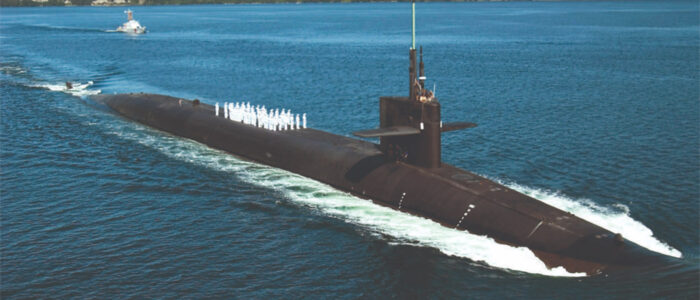India’s plan for the development of its naval capabilities, especially the nuclear submarines, is in accordance with its nuclear modernisation plans since 1998 atomic tests. On 30 December 2019, an Indian parliamentary panel was briefed about the reinforcement of its submerged fleet. The plan includes the construction of 24 submarines altogether including six SSN (submarines able to launch a nuclear attack) and 18 conventional submarines. This is not the first time that the Indian navy has planned for building new submarines. Back in 1999, a similar 30-year plan to build 24 diesel submarines was given, which has still not been materialised. This article analyses the Indian naval history and argues that the latest plan of building two dozen submarines will not be materialised.
The major hindrance is delayed follow-up on performance. India acquired its first submarine from the Soviets in 1967. Work on nuclear propulsion started in India in 1981 at Bhabha Atomic Research Centre with Soviet assistance. Most of the Indian submarines are Soviet-designed or leased and then indigenously built following the pattern. At the current stage, the Indian navy has 15 conventional submarines and two nuclear-powered ones.
Acquiring more nuclear submarines equipped with a cruise or ballistic missiles will provide India with more effectiveness and versatility in naval capabilities. An SSBN (Ship, Submersible, Ballistic, Nuclear) is a more sophisticated stealth technology with a high accurate surveillance system. Unlike conventional torpedoes, the cruise missiles launched through SSN can be more destructive for the enemy because they can target from stand-off sea ranges on the land. India’s first indigenously built submarine is capable of carrying 12 Sagarika K-15 missiles each with a range of 700km. Recently they have tested K-4, a nuclear-capable missile with the range of 3,500km. Surely, this will increase India’s sea-based deterrence.
Most of these diesel-powered submarines are aged above 25 years. The plan to upgrade submarines and building new ones has not shown any satisfactory advancement. The process has already consumed a lot of time. By the time, the new plan is materialised, there is a probability that either most of the older vessels would have been retired from work or have completed their service because normally a submarine operates for 36 years in service.
Lack of proper safety mechanism and maintenance services is another major hindrance. Majority of the submarines including two nuclear submarines, have encountered various accidents. In 2017, INS Chakra suffered an accident in which its sonar dome was damaged i.e. a front part of a submarine, which is located under the torpedo tubes. INS Chakra is a modernised Russian Akula Class Nuclear submarine. The cause given for the accident was that “either a collision at sea or accidental scraping while entering the harbour.” It was also said that a substantial repair work is required to get the vessel back at work in its previous working condition. Subsequently, $US 2.9 billion INS Arihant submarine sank because one of its hatches was left opened as somebody forgot to close it. It was told that “it was a human error and Arihant’s propulsion compartment was damaged after water entered it.” However, when the details were inquired about the accident in the lower house of the Indian parliament, Defence Ministry refused to outline the facts about repairing cost and damage encountered. India claims that its nuclear triad assures a second-strike nuclear capability. However, the number of accidents are not limited to nuclear-powered attack submarines – Arihant and Chakra but also diesel-powered vessels including INS Sindhughosh, INS Shankush, INS Sindurakshak and INS Sindhuratna.
These accidents advocate the impression that the Indian Navy is inadequately paying attention to safety mechanisms necessary for the maintenance of a nuclear-powered attack submarine. The consequences of nuclear submarine accidents are very frightening, because these nuclear vessels, due to their operational features, have complicated the technological system which is being operated under challenging circumstances. Additionally, missiles used in these submarines are ballistic in nature. Second, one of the major dangers is of nuclear submarine reactor accidents. It could have non-recoverable effects on humans and aquatic life because of uncontrollable high potential radioactive waves. In this regard, India lacks proper safety measures.
Meanwhile, management and up-gradation of an underwater nuclear fleet with proper safety and security measures is even more difficult task, and India does not have a satisfactory record in this domain as stated in a report by India Today. The Indian Navy has lost one warship in peacetime every five years since 1990. Moreover, one naval combatant has also been lost every two years since 2004. Such record is a cause of concern for the Indian Navy.
The accidents encountered by the Indian naval submarines put a big question mark on India’s aspirations for a sustainable and safe blue water navy. Moreover, it also raises concerns about India’s ability to catch up with the necessities of high hazard technology. Also, whether it is really capable to meet the demands of safe operations in terms of complicated naval nuclear capability is another point in question.
